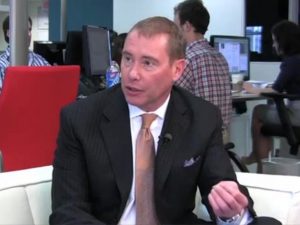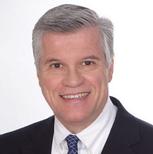Since its inception in July 2011, our Stable High Yield portfolio has relied on the high yields of mortgage real estate investment trusts for a significant part of its return. The mission of the portfolio is to achieve long-term returns that approximate the average annual return of the stock market. Through April 30, the model has returned 13.4% on an annualized basis, compared to 13.9% for the Standard & Poor’s 500 Index (SPX).
However, continuing underperformance relative to my expectations occurred among certain mREITs, including Capstead Mortgage (CMO), CYS Investments (CYS) and Hatteras Financial (HTS). Therefore, I sold them out of the portfolio in late April.
 Proceeds from those sales were used to establish a 15 percent (as of April 30) position in a new exchange traded fund, the DoubleLine Income Solutions Fund (DSL). Jeffrey Gundlach (pictured at right), DoubleLine’s chief executive and chief investment officer, indicates that the fund will invest substantially in dollar-denominated emerging market corporate debt rated between BBB and B. This will thus become a high-yield component of the Stable High Yield model.
Proceeds from those sales were used to establish a 15 percent (as of April 30) position in a new exchange traded fund, the DoubleLine Income Solutions Fund (DSL). Jeffrey Gundlach (pictured at right), DoubleLine’s chief executive and chief investment officer, indicates that the fund will invest substantially in dollar-denominated emerging market corporate debt rated between BBB and B. This will thus become a high-yield component of the Stable High Yield model.
As of April 30, the yield section of the model (54%) now is composed as follows: mREITs, 27%; high-yield bonds, 15%; pipeline master limited partnerships, 7%; and Build America Bonds, 5%. The “stabilizing” section of the model (46%) consists of short-term corporate bonds (40%) and cash (6%). I anticipate, however, that the cash holding may be invested in the yield section as opportunities arise. Should that occur, the allocation would become (approximately) 60% yield and 40% “stabilizing” short-term bond investments and residual cash.
The working strategy of the model remains: balancing aggressive income investments with very low beta, near-cash holdings, in order to achieve long-term results that approximate the historical annual average return of the stock market.
Image: Business Insider
The investments discussed are held in client accounts as of April 30 , 2013. These investments may or may not be currently held in client accounts. The reader should not assume that any investments identified were or will be profitable or that any investment recommendations or investment decisions we make in the future will be profitable.



